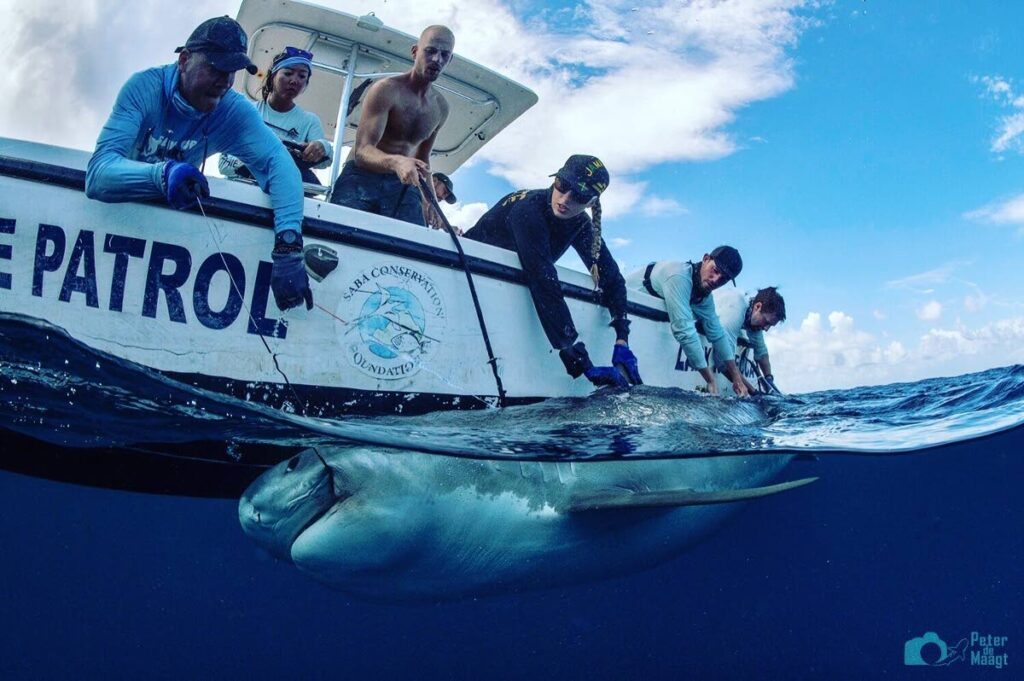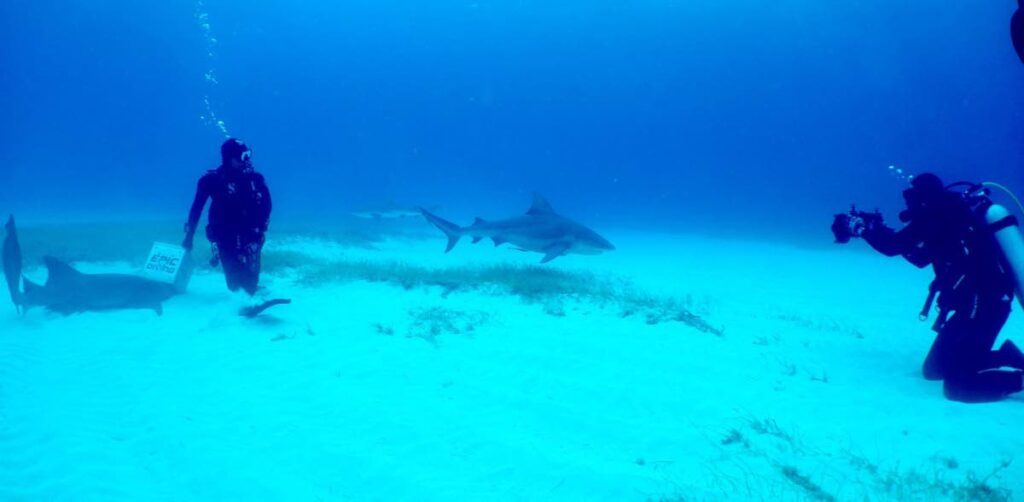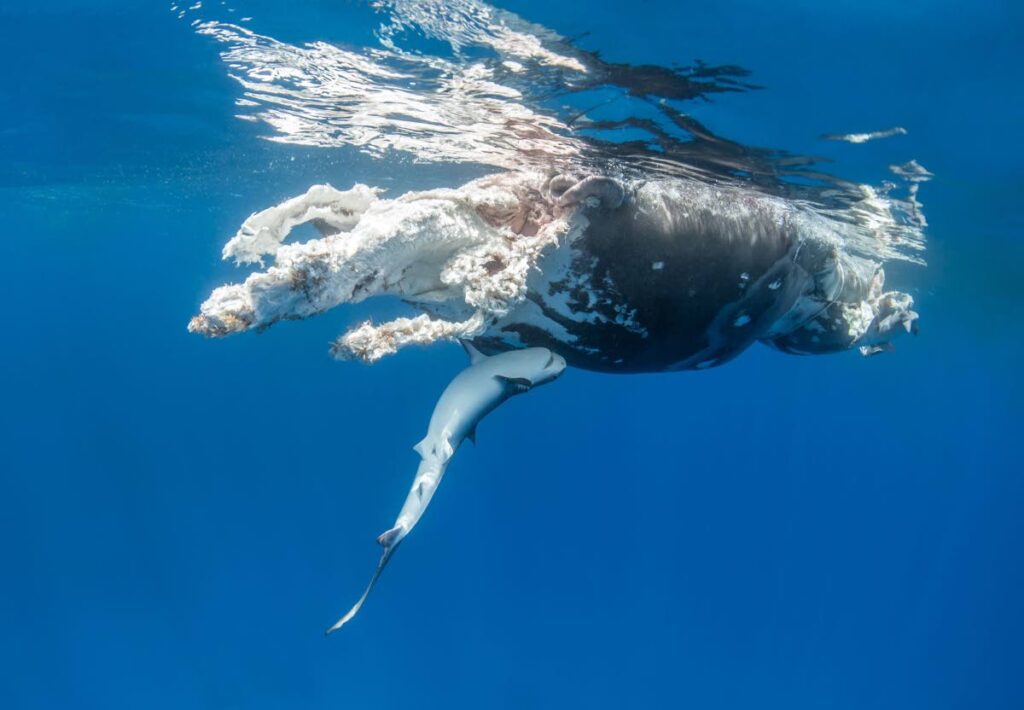What we need to know about sharks

Dr Anjani Ganase talks with Tadzio Bervoets, co-founder of Caribbean Shark Coalition, about shark attacks in the Caribbean Sea.
The news was terrible, Friday morning. The messages were flying in. Was it true? Was there a shark attack in Tobago? Can’t be, I thought, that’s not something that happens in Trinidad and Tobago.
But it was true: an unprovoked shark attack on a British tourist in the shallow water of Turtle Beach.
Finally, a message I wanted to receive. It was from Tadzio: “I heard what happened. Terrible. Please let me know how I can help. I hope the victim is doing okay.”
Tadzio is from Sint Maarten and has worked in marine research and conservation in the Dutch Antilles for 20 years. He is the former director of Sint Maarten Nature Foundation, and during his time there he managed to get the entire exclusive economic zone of Sint Maarten designated a marine protected area and shark sanctuary. He is currently the executive director of Dutch Caribbean Nature Alliance, doing shark research and carrying out educational campaigns on the importance of sharks.

In 2021, Tadzio co-founded the Caribbean Shark Coalition with Dr Austin Gallagher (CEO of Beneath the Wave). The coalition is a regional co-operative of NGOs, experts, policy-makers and community groups that aims to build shark research and conservation throughout the Caribbean through collaborative efforts to guide regional and international policies and conventions.
I discussed shark attacks in the Caribbean with Tadzio and here’s what we need to know.
How common are shark attacks in the Caribbean?
I’ve only worked on two consultancies related to unprovoked shark attacks (a shark bites a living human in its natural environment without any provocation) in my career. While it is tragic, it’s also very rare.
The first one was in December 2020 in St Martin, where there was a fatal attack by a tiger shark.
A couple weeks later a woman lost her leg in St Kitts and Nevis – DNA analysis confirmed it was the same shark involved in the fatal attack in St Martin.
Most of the attacks were from tiger sharks, which are oceanic and migratory species.

However, bull sharks are also apex predators capable of attacking humans. Bull sharks, in contrast, are a coastal species, and tend to frequent river mouths and brackish areas to hunt for food. They can mistake humans as prey in these scenarios.
I’ve done a quick search, and I don’t think there has ever been a shark attack like this in TT. Perhaps this is the first.
What should be the response to an attack?
Unfortunately, a common response to shark attacks is “revenge culling” of sharks. This means that the shark gets hunted down, but inevitably results in a large numbers of sharks (of many different species, many of which are harmless) being killed indiscriminately.
There is no evidence that these culls do anything to reduce the risk, especially for large migratory species. Furthermore, it does considerable damage to the health of local marine ecosystems.
Putting out rewards for the capture of the shark is a typical kneejerk reaction for decision-makers. We can’t blame them for wanting to keep their citizens safe.
I was happy to see that the bounty (offered by the THA) was retracted and that the decision-makers informed themselves on the value of sharks to their marine ecosystems, and are now looking to keep people safe while managing for nature.
So what should people do?
In the event of a shark attack, time is of the essence to ensure that the casualty receives quick medical attention.
Proper investigation and incident reporting should be done to determine the environmental conditions and related activities at the time of the attack. This allows you to build out your safety response.
Temporary closure of surrounding beaches is recommended.

Close monitoring of coastal areas to track the movement of the shark or sharks is also recommended. This can be done by the use of drones and patrols by boats. The patrolling will track the movement and determine if it is an individual shark or an aggregation of sharks and will guide further action of beach closures.
This has been done and I applaud TEMA (Tobago Emergency Management Agency) for managing this well.
During the time of beach closure, wide-scale stakeholder engagement is essential. The campaign will dispel false information, as well as share safe practices to reduce the risk of shark attack.
This is also the time to build capacity and remind tour operators and marine-resource managers to brush up on their emergency first response and review safety protocols on the water. Make sure that emergency first responders have the tools and are able to apply a tourniquet.
Consideration should be given to designated lookouts on boats with a sighting network that uses whistles or radios to communicate a sighting of a shark.
Once precautions are in place, beaches can then be reopened in a phased approach where beachgoers would be encouraged to bathe at beaches that are regularly patrolled and monitored with lifeguards.
Why should sharks be protected?
Sharks are apex predators of the ocean. They control fish populations and maintain balance in the food web. Healthy populations of sharks are associated with healthy coral reefs and seagrass habitats. They regulate over-grazing of seagrasses and maintain the population of parrotfish which cleans reefs of algae. They clean up the ocean of injured or sick animals.

Many species of sharks in the Caribbean are heavily exploited, and as a result are critically endangered. Many reefs around the Caribbean, including Tobago, no longer have an abundance of reef sharks.
Studies in Brazil and Reunion Island in the Indian Ocean have seen increases in bull shark attacks associated with degraded marine ecosystems. Specifically, areas of heavy effluence or pollution run off from river areas become more frequented by hunting sharks, while significant reductions in fish populations encourage sharks to hunt for alternative food sources.
How would shark research and conservation help with shark safety in the long term?
We fear what we don’t know. A major component of shark conservation is building awareness, respect and appreciation for this group of predators. If there is more investment into studying shark biology and ecology, there would be better understanding of the preferred habitats of the sharks, and their daily and seasonal behaviours.
This knowledge will inform marine management and coastal spatial planning, to reduce the risk of shark attacks. This means restricting bathing at areas or beaches where there is fishing/hunting and fish processing activities. Furthermore, the management of water quality in coastal waterways also contribute to better safety.
The value of sharks and understanding of their behaviours must be shared with resource users. Tour operators begin to benefit significantly from the protection of sharks. A study done in Sint Maarten showed that live sharks bring in up to US$750,000 in revenue, compared to a dead shark, which is sold at US$170.
Is the shark sanctuary in Sint Maarten effective?
A permanent moratorium on intentional fishing and landing of sharks is being upheld in Sint Maarten. If a shark is caught, the person must do everything possible to safely return the shark to sea. If a shark is landed, it must be reported.
On St Martin (the French side), the catching of sharks is still allowed, but with a seasonal regulation.
For large apex species that are migratory and therefore travel thousands of kilometres, small microcosms of protection in places such as Sint Maarten, Bahamas and Dominican Republic are not enough for proper conservation. Large marine protected areas along with protected migratory pathways are needed.
We have tagged sharks on Saba Bank where it is protected and one has made its way all the way to the north coast of Trinidad, where we know it is vulnerable to fishing.
Would shark protection increase the risk of shark attacks?
No. While shark attacks are horrible, they have actually incentivised the mobilisation of funds towards shark research and policy development (as was seen in St Martin). We benefit from knowing more about them and their behaviour, and it makes our activities safer.
How do we keep safe?
The biggest factor for being more prone to a shark attack is the surrounding environment. For example, you are more likely to get bitten in murky or dark waters, as most sharks use the limited visibility to hunt. Sharks are also more active at dusk and dawn, so avoid swimming at these times, and avoid murky waters close to river mouths, especially after it rains.
When you go in the water, avoid areas of fishing activity and fish-cleaning.
Avoid busy marine feeding activities, such as diving birds and schooling fish; chances are sharks will join the feeding frenzy.
Fishing and spearfishing activities automatically increase your chances of being bitten by a shark, if you are in the water. These are provoked attacks, as sharks are highly stimulated by fish blood and struggling fish.
Follow the rules and guidelines from local authorities, life guards and boat operators. Maintain awareness of your surroundings.
If you see a shadow in the water, notify others, make your way to the shore and exit the water until the shadow is identified. It may be a school of fish, but better to be cautious.


Comments
"What we need to know about sharks"